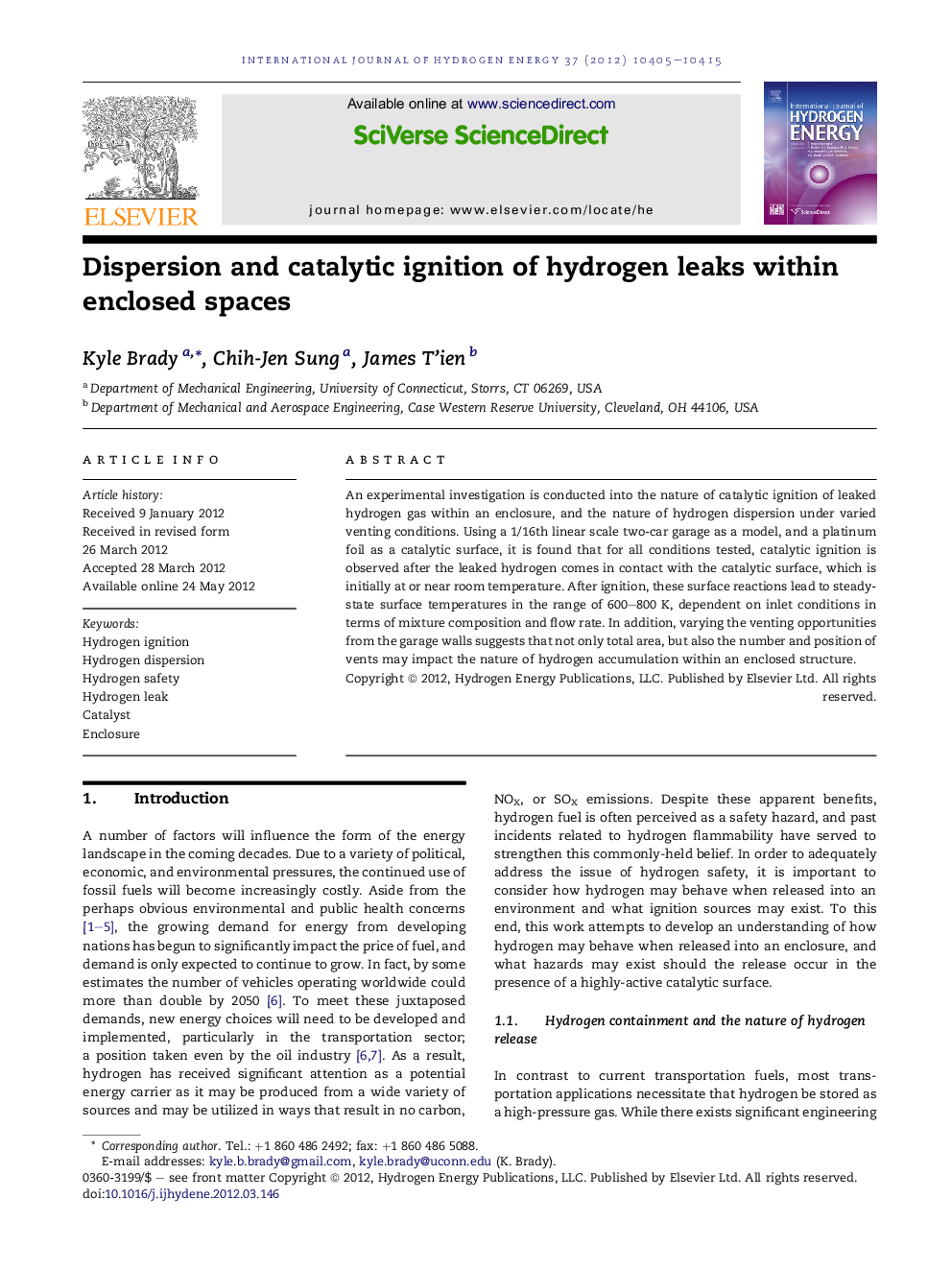| Article ID | Journal | Published Year | Pages | File Type |
|---|---|---|---|---|
| 1275231 | International Journal of Hydrogen Energy | 2012 | 11 Pages |
An experimental investigation is conducted into the nature of catalytic ignition of leaked hydrogen gas within an enclosure, and the nature of hydrogen dispersion under varied venting conditions. Using a 1/16th linear scale two-car garage as a model, and a platinum foil as a catalytic surface, it is found that for all conditions tested, catalytic ignition is observed after the leaked hydrogen comes in contact with the catalytic surface, which is initially at or near room temperature. After ignition, these surface reactions lead to steady-state surface temperatures in the range of 600–800 K, dependent on inlet conditions in terms of mixture composition and flow rate. In addition, varying the venting opportunities from the garage walls suggests that not only total area, but also the number and position of vents may impact the nature of hydrogen accumulation within an enclosed structure.
► We conduct an experimental study of hydrogen leaks within enclosures. ► Catalytic ignition and hydrogen accumulation is considered. ► Catalytic ignition is observed from room temperature tested for all conditions tested. ► Varied vent position may impact the total accumulated hydrogen.
